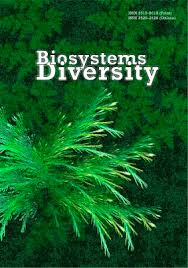Diversity of Sambucus nigra pollen within Slovakia in selected morphological characters by SEM study
Diversity of Sambucus nigra pollen within Slovakia in selected morphological characters by SEM study
Author(s): V. Horčinová Sedláčková, O. Grygorieva, I. Gurnenko, O. VergunSubject(s): Agriculture, Sociobiology
Published by: Дніпропетровський національний університет імені Олеся Гончара
Keywords: pollen grains; scanning electron microscopy; morphology characteristic; pollen structure;
Summary/Abstract: This study analyzed pollen morphology and characteristics of 20 Sambucus nigra L. genotypes from populations of various ecotypes and geographical localities from the territory of Slovakia. We used principal component analysis to explore variability in pollen grain size (polar and equatorial diameter), shape, aperture type, and exine ornamentation by scanning electron microscopy. The combination of these morphological characteristics and ultrastructure allows us to determine the differences or similarities between the same and various species and genotypes, which may be a useful tool for systematics with significant diagnostic value. The findings confirmed small differences among the genotypes in measured traits with polar and equatorial diameters in the range from 22.30 to 26.64 μm and from 12.81 to 14.45 μm, respectively. Shape index (P/E ratio) depending on elongation or roundness of pollen grains varied from 1.66 to 2.02. Hierarchical cluster analysis (HCA) and principal component analysis (PCA) of morphological data helped to compare evaluated morphometric parameters and identified three closely related groups. It was noted that the diversity of surface sculpturing of pollen grains in combination with their shape and size enables us to use a complex of fine morphologic signs for S. nigra pollen identification. Pollen data combined with other morphological evidence (e.g., floral characters) have more recently become an important indicator of which genotypes may be the best representatives of species.
Journal: Biosystems Diversity
- Issue Year: 28/2020
- Issue No: 4
- Page Range: 399-404
- Page Count: 6
- Language: English

